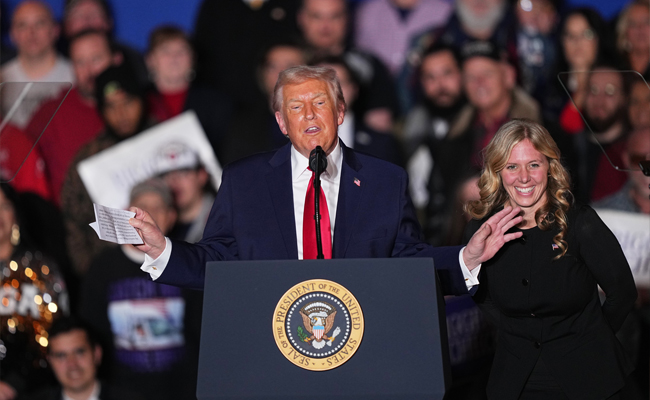San Francisco: Video of the first self-driving car crash that killed a pedestrian showed how the autonomous Uber failed to slow down as it fatally hit a 49-year-old woman walking her bike across the street.
The newly released footage of the collision that killed Elaine Herzberg in Tempe, Arizona, on Sunday night has raised fresh questions about why the self-driving car did not stop when a human entered its path and has sparked scrutiny of regulations in the state, which has encouraged testing of the autonomous technology.
“It’s just awful,” Tina Marie Herzberg White, a stepdaughter of the victim, told the Guardian on Wednesday. “There should be a criminal case.”
Police have released two videos of the case – one outside and one showing the interior of the Volvo SUV. The four-second exterior video showed the car driving down a somewhat dark and largely empty street as it collided into the woman walking directly in its path.
The 14-second video inside the car showed the operator, identified by police as Rafaela Vasquez, 44, appearing to look at something inside the vehicle and not at the road at the time of the collision. She alternated between looking down and looking forward and appeared shocked at the last minute just as the car failed to stop.
Local prosecutors will decide whether criminal charges are warranted. Some have argued that under new rules issued by Arizona’s governor, a strong proponent of the technology, a company like Uber could possibly be criminally liable if an autonomous car negligently killed someone. But police chief Sylvia Moir suggested in an interview that she believed Uber wasn’t at fault.
Let the Truth be known. If you read VB and like VB, please be a VB Supporter and Help us deliver the Truth to one and all.
Itanagar (PTI): Eleven more bodies were retrieved on Saturday from the deep gorge in Arunachal Pradesh's Anjaw district, where a mini-truck on which 22 labourers from Assam were travelling fell, an official said.
With this, 17 bodies have been recovered from the accident site, Anjaw's deputy commissioner Milo Kojin said.
He said three more bodies will be brought out on Sunday.
The operation, being conducted by a joint team of the NDRF and Army, resumed at 6 am.
ALSO READ: Traffic fraud: Fake 'no-entry' sticker racket busted in Delhi, mastermind among 3 held
"The retrieval process was extremely difficult because of the treacherous terrain, and the gorge is very deep," Kojin said.
The operation was suspended around 4 pm due to low visibility and will be resumed on Sunday morning, he said.
"One person is still missing, and a search operation will be carried out tomorrow," he added.
The accident happened on the evening of December 8, around 40 km from Hayuliang towards Chaglagam in the district. On the evening of December 10, one survivor managed to climb out of the gorge and reach a nearby Border Roads Task Force (BRTF) labour camp, following which the authorities were alerted.
Six bodies were recovered from the gorge on Friday and handed over to their families on Saturday.





